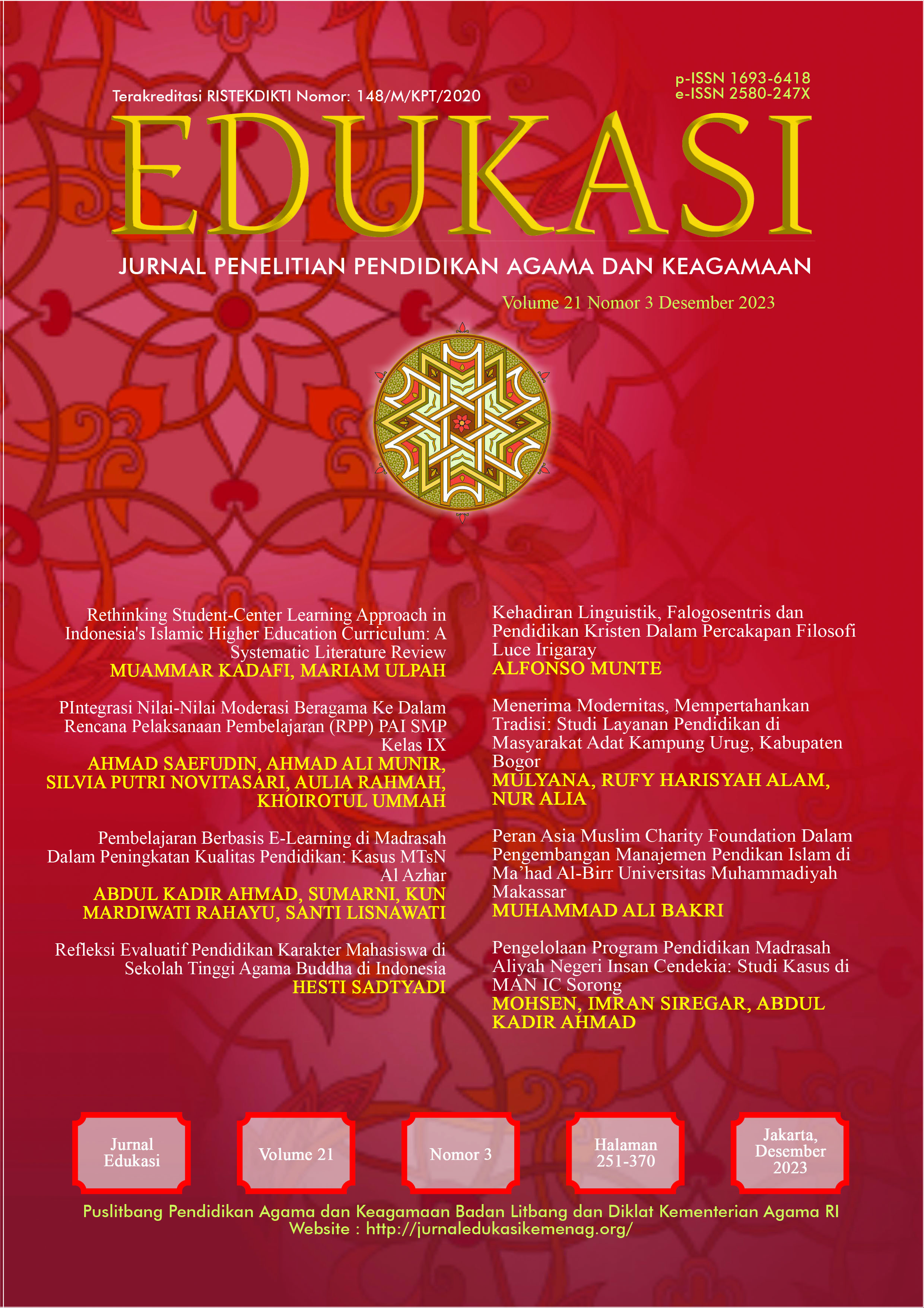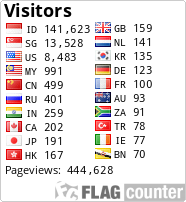Aksara Pegon dan Transmisi Keilmuan Islam: Potret dari Pesantren Babakan Ciwaringin Cirebon
DOI:
https://doi.org/10.32729/edukasi.v21i2.1415Abstract
The Pegon script has long and massively been used as a medium for the transmission of Islamic knowledge, primarily in Java at least up to both 18th-19th centuries AD. In the 20th century AD, its use in general nevertheless declined, except in the pesantren world such as Pesantren Babakan Ciwaringin Cirebon. More than that, KH Muhammad Sanusi, one of its prime leaders, produced works in Javanese by using the Pegon script. This article focuses on three research problems including 1) the position of K.H. M. Sanusi in the network of Islamic intellectuals in Cirebon; 2) The role of K.H. M. Sanusi in the transmission of Islamic sciences through the Pegon script; and 3) the continuity of the use of the Pegon script up to the present. This article uses a qualitative approach based on the historical method comprising of four steps namely heuristics, source criticism, interpretation, and historiography. Data collection technique is carried out by literature study, observation, and interviews. The results of the research show that K.H. M. Sanusi is the main companion of K.H. Amin Sepuh and through the chain of the latter is he connected to the Cirebon based Islamic intellectual networks; K.H. M. Sanusi composed a number of books using the Pegon script and taught them to his pupils as a form of continuing the transmission of Islamic knowledge; The use of the pegon script continues to this day in the pesantren world as being proven in Pesantren Babakan Ciwaringin where a number of newly religious works using the Pegon script are existent and those works are even still used as sources for teaching Islamic knowledge.
Downloads
Published
Issue
Section
License
Copyright (c) 2023 Asep Saefullah, Didin Nurul Rosidin, Zumaroh Hadi Sulistiani

This work is licensed under a Creative Commons Attribution-ShareAlike 4.0 International License.
Copyright Notice
Authors who publish with this journal agree to the following terms:
- Authors retain copyright and grant the journal right of first publication with the work simultaneously licensed under a Creative Commons Attribution License that allows others to share the work with an acknowledgement of the work's authorship and initial publication in this journal.
- Authors are able to enter into separate, additional contractual arrangements for the non-exclusive distribution of the journal's published version of the work (e.g., post it to an institutional repository or publish it in a book), with an acknowledgement of its initial publication in this journal.
- Authors are permitted and encouraged to post their work online (e.g., in institutional repositories or on their website) prior to and during the submission process, as it can lead to productive exchanges, as well as earlier and greater citation of published work (See The Effect of Open Access).
EDUKASI Â have CC-BY-SA or an equivalent license as the optimal license for the publication, distribution, use, and reuse of scholarly work.
In developing strategy and setting priorities, EDUKASI Â recognize that free access is better than priced access, libre access is better than free access, and libre under CC-BY-SA or the equivalent is better than libre under more restrictive open licenses. We should achieve what we can when we can. We should not delay achieving free in order to achieve libre, and we should not stop with free when we can achieve libre.
 EDUKASI  is licensed under a Creative Commons Attribution 3.0 International License
You are free to:
- Share — copy and redistribute the material in any medium or format
- Adapt — remix, transform, and build upon the material for any purpose, even commercially.
- The licensor cannot revoke these freedoms as long as you follow the license terms.









